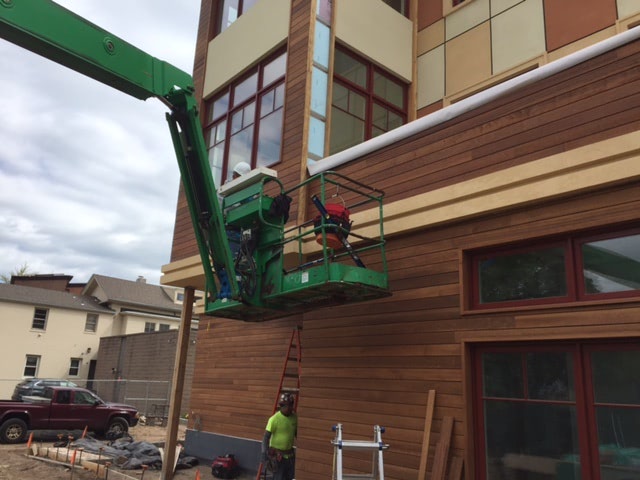
Related Posts



Construction work is dangerous work and most major accidents occur when working from heights. Installing siding requires maximum precaution because the chances and extent of potential of injury increase the higher you go. The possibilities of missing a step on a ladder, tripping on staging or scaffolding are real concerns. Proper safety precautions should always be exercised.
The safety equipment must match the intensity of the job. Although safety equipment offers some protection, siding installation is still challenging and requires more than just safety equipment - it requires you. Here are a few safety tips while navigating the scaffolding during this job.
Slow Down…Work at a Safe Speed
For most construction project managers, meeting construction schedules is very important. This is true for clients too. The urge to finish a job faster may contribute to carelessness during the installation of siding. However, there is no need to sacrifice safety over speed. There’s a saying, “Never work faster than the speed of safety or accuracy.” When using scaffolding, take it slow by practicing safety constantly. If an individual is working efficiently, safety must be the first key factor for consideration.

Keep an Organized Work Station
When working with scaffolding on a siding or wood rain screen installation, an individual should keep the workplace tidy and organized. This can be done by avoiding spills, trips as well as fall hazards. Additionally, the working tools should be organized. With organized working tools comes minimized movement in the workstation. The reduced movement promotes safety around the scaffolding. With that in place, chances of falling off the scaffolding are greatly reduced.
Identify Potential Job Site Hazards
This tip should be considered before the beginning of any work at the construction site. There must be a proper inspection of the construction site before siding installation begins. Identify possible danger spots on the site. These could be power spots or flood dominated zones. Depending on the cited hazards, the scaffolding should be kept away from the marked areas. If it is necessary to move the scaffolding to a different site after work, formulate a workable plan.
Proper Training
Working at a construction site requires proper training. It is essential for the general contractors to ensure that the hired workers possess are qualified for the job. This is determined by ensuring they are up to date with the OSHA requirements. Under OSHA requirements, the employer is responsible for offering safe and healthy work stations for workers. The primary objective of OSHA is fostering safe as well as healthful workstations. This is done by setting and promoting high standards through training, education, workshop, and assistance. The workshop bit should offer training on how to assemble scaffolding. The steps must include safety measures. With such training, there will be lesser chances of falling off the scaffolding when installing siding. Before hiring constructors, OSHA standards must be adhered to.

Site Review
A site review entails the continuous assessment of a construction site. This assessment enables the general contractor to keep tabs on any new hazards on site. Being watchful of the possible risks will assist in preventing them from occurring. As work progresses, workers may become complacent on the job, which can promote negligence and potentially lead to accidents. Before beginning any work on site, ensure that a qualified professional from the safety department has checked the scaffolding. Make sure that the platforms have a proper setup. The setup involves following all the appropriate safety precautions. An example of these precautions includes assembling the railing systems by OSHA. This is done to minimize accidents and protect workers while working on this equipment.
Weather Forecast
While construction projects come with schedules to hit, it is vital to consider the possibilities of bad weather. Inclement weather may prevent workers from seeing correctly. The thought of climbing scaffolding in a storm can be terrifying...and dangerous. Rain can make equipment slippery. At the same time, sun rays can promote myopia during construction.

Be Observant
As a contractor, always pay attention to safety labels. Some scaffolding or other equipment may be labeled out of service. Such 'tag out' labels mean that equipment is faulty. Unless you're paying proper attention, you may end up using the scaffolding, which can be dangerous. As a construction manager or job site superintendent, ensure that the scaffolding available on site is in service and good condition.
Conclusion
Scaffolding can make siding installations faster and a whole lot safer. It is also easier to work off scaffolding compared to a ladder, especially on larger jobs. Before using one, ensure it is in good condition. Be safe!
Jessica Kane is a professional blog author and offers these safety tips on behalf of the scaffoldingstore.com


